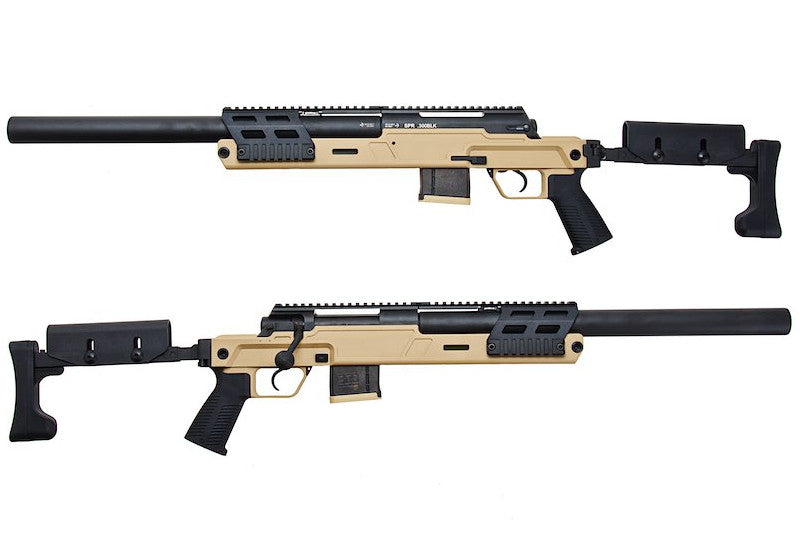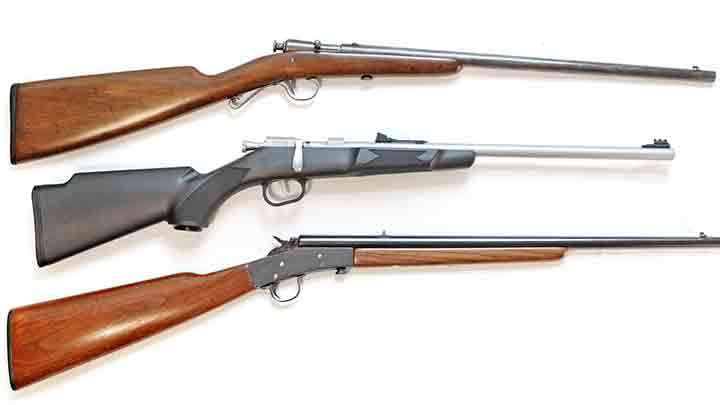Types of Spring-Action Air Rifles: A Comprehensive Guide
Types of Spring-Action Air Rifles: A Comprehensive Guide
Spring-action air rifles represent one of the most popular and enduring designs in the airgun world. With their self-contained power systems and authentic shooting experience, these rifles continue to be a favorite among shooters of all skill levels.
In this comprehensive guide, we'll explore the various types of spring-action air rifles available on the market today, helping you understand the differences and find the perfect model for your needs.
Understanding Spring-Action Technology
Before diving into the specific types, it's important to understand how spring-action rifles work. These airguns, also known as springers, operate using a powerful coiled spring and piston system. When you cock the rifle, you compress the spring, and upon pulling the trigger, the spring releases, driving the piston forward. This rapid compression creates air pressure that propels the pellet down the barrel.
This simple yet effective mechanism gives spring-action rifles several advantages:
- No external power source required
- Consistent power delivery
- Authentic recoil sensation
- Reliable performance in various weather conditions
- Lower long-term operating costs
Now, let's explore the different types of spring-action air rifles available in ourextensive collection at Air Gun Source.
Break-Barrel Spring Rifles

Break-barrel rifles are the most common and recognizable type of spring-action air rifles. As the name suggests, these rifles feature a barrel that "breaks" or hinges downward for cocking and loading.
Key Features:
- Simple Operation: The barrel itself serves as the cocking lever
- Single-Shot Loading: One pellet is loaded directly into the breech with each cock
- Self-Contained Design: All components are integrated into a single unit
- Varied Power Levels: Available from entry-level to high-powered models
- Wide Price Range: Accessible options for beginners and premium models for enthusiasts
Break-barrel rifles are excellent all-around performers, suitable for target shooting, pest control, and even small game hunting with appropriate power levels. Their straightforward design makes them ideal for beginners, while advanced models offer performance that satisfies experienced shooters.
Underlever Spring Rifles

Underlever rifles feature a cocking lever positioned beneath the barrel. This design offers several advantages over the traditional break-barrel configuration.
Key Features:
- Fixed Barrel Design: The barrel doesn't move during cocking, potentially improving accuracy
- Stronger Cocking Leverage: Can accommodate more powerful springs
- Sleek Profile: Streamlined appearance with the cocking mechanism tucked away
- Often Higher Quality: Typically found in mid-range to premium price brackets
- Loading Systems: Usually feature a sliding breech or loading port
Underlever rifles are often preferred by serious target shooters who value the fixed barrel's consistent accuracy. The design also tends to be more comfortable for shooters who find the break-barrel cocking action awkward or difficult.
Sidelever Spring Rifles

Less common but highly appreciated by enthusiasts, sidelever spring rifles feature a cocking lever positioned on the side of the action.
Key Features:
- Fixed Barrel: Like underlevers, maintains barrel alignment between shots
- Ergonomic Cocking: The side-mounted lever can be easier to operate for some shooters
- Typically Premium Construction: Often found on higher-end models
- Loading Systems: Usually feature a sliding breech similar to underlever designs
- Distinctive Appearance: Unique profile that stands apart from more common designs
Sidelever rifles often appeal to collectors and precision shooters who appreciate their distinctive design and quality construction. They're less common in the North American market but offer excellent performance for those seeking something different.
Oversized Spring Rifles

These specialized spring-action rifles, sometimes called "magnum springers," feature oversized compression chambers and more powerful springs.
Key Features:
- Enhanced Power Output: Typically deliver higher velocities and impact energy
- Heavier Construction: Built to handle the increased spring tension
- More Challenging Cocking Effort: Require greater strength to operate
- Pronounced Recoil: More significant kick than standard models
- Suitable for Hunting: Power levels appropriate for small game (where legal)
These high-powered spring rifles are ideal for experienced adult shooters who need additional power for longer range shooting or hunting applications. Due to their increased cocking effort and recoil, they're generally not recommended for beginners or younger shooters.
Youth and Training Spring Rifles

Specifically designed for younger shooters or those new to the sport, these rifles feature lower-powered springs and lighter, more manageable designs.
Key Features:
- Reduced Power: Lower velocities for safety and easier handling
- Lighter Cocking Effort: Easier for younger or smaller-framed shooters
- Shorter Stock Dimensions: Better fit for smaller shooters
- Enhanced Safety Features: Often include additional safety mechanisms
- Affordable Price Points: Generally more budget-friendly
These entry-level spring rifles provide an excellent introduction to proper airgun handling and marksmanship fundamentals. Many shooters develop lifelong skills on these accessible platforms before graduating to more powerful models.
Gas Ram (Gas Piston) Rifles

While technically not traditional spring rifles, gas ram (also called gas piston or nitro piston) rifles deserve mention as they represent an evolution of the spring-action concept.
Key Features:
- Gas-Filled Cylinder: Replaces the metal spring with a compressed gas cylinder
- Smoother Cocking: Often easier to cock than equivalent spring models
- Reduced Vibration: Less "twang" than traditional springs
- Cold Weather Performance: Less affected by low temperatures
- Longer Service Life: Gas rams typically outlast metal springs
Gas ram rifles offer the same self-contained convenience as traditional springers but with several performance advantages. They're particularly popular among hunters who appreciate their smooth firing cycle and reduced noise. If you're interested in learning more about these innovative designs, check out our guide onchoosing the right spring-action air rifle.
Maintenance Considerations
Different spring rifle designs have varying maintenance requirements. Break-barrels typically have fewer moving parts but may need more attention to their barrel hinge and locking mechanism. Underlever and sidelever models have additional mechanical components that benefit from regular inspection and lubrication.
For detailed information on keeping your spring-action rifle performing at its best, visit our comprehensive guide onmaintenance and care for spring-action rifles.
Hunting Applications
Spring-action rifles can be excellent hunting tools when selected appropriately. Models with sufficient power (typically above 12 ft-lbs for small game) and accuracy are favored by many hunters for their reliability and independence from external power sources.
If you're interested in using a spring-action rifle for hunting, be sure to read our specialized guide onhunting with spring-action air rifles for tips, techniques, and ethical considerations.
Finding Your Perfect Spring-Action Air Rifle
With so many types of spring-action rifles available, the perfect model for you depends on your specific needs, preferences, and experience level:
- For Beginners: Consider a mid-powered break-barrel for its simplicity and ease of use
- For Target Shooters: An underlever or sidelever with a fixed barrel may offer the best accuracy
- For Hunters: Higher-powered break-barrels or gas ram models provide the necessary energy
- For Young Shooters: Youth-oriented models with lighter cocking effort and appropriate dimensions
- For Enthusiasts: Premium underlevers or sidelevers with advanced features and superior craftsmanship
Visit ourspring-action rifles collection to explore the full range of options available at Air Gun Source.
Conclusion
Spring-action air rifles continue to thrive in an era of advanced PCP and CO2 technology because they offer something timeless: reliable, self-contained performance with an authentic shooting experience. Whether you're just starting your airgun journey or adding to an established collection, understanding the different types of spring-action rifles helps you make an informed choice that will provide years of shooting enjoyment.
Remember that proper technique is especially important with spring rifles, as their recoil characteristics require consistent hold and follow-through for optimal accuracy. With practice and the right model for your needs, a quality spring-action air rifle can deliver impressive performance that rivals much more expensive airgun designs.
Ready to find your perfect spring-action air rifle? Browse ourcomplete selection of high-quality models from the industry's leading manufacturers.






